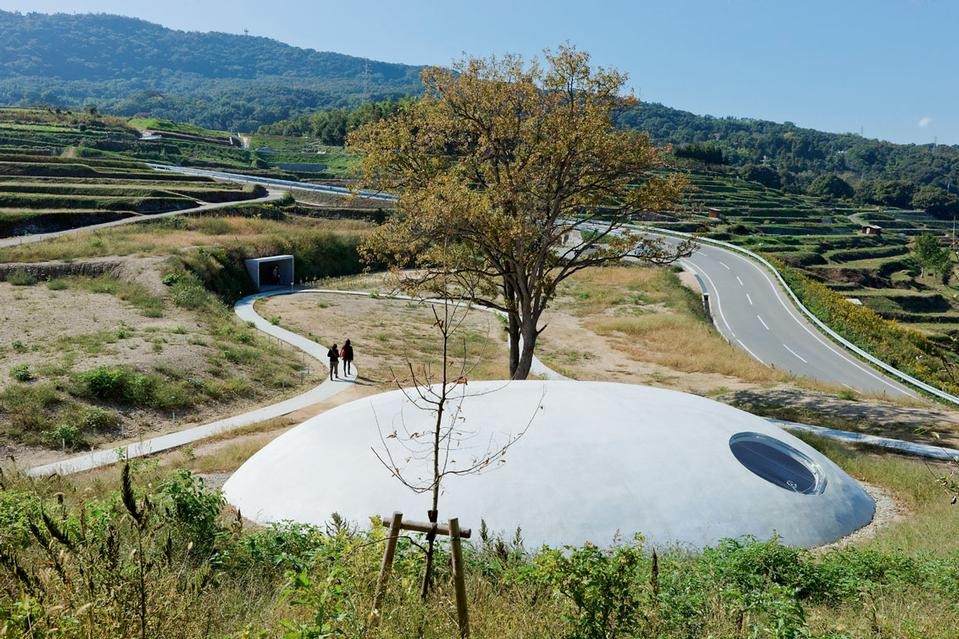The blob is not only a recent phenomenon; the contiguously curving building is not merely the result of parametric manipulation on the computer. The Teshima Art Museum may not automatically reveal the authorship of its architect Ryue Nishizawa. It certainly seems unconventional when first discerned amid the stepped green fields of Teshima, an island in Japan’s Inland Sea. The museum billows upward as a white, bulbous and irregular excrescence.
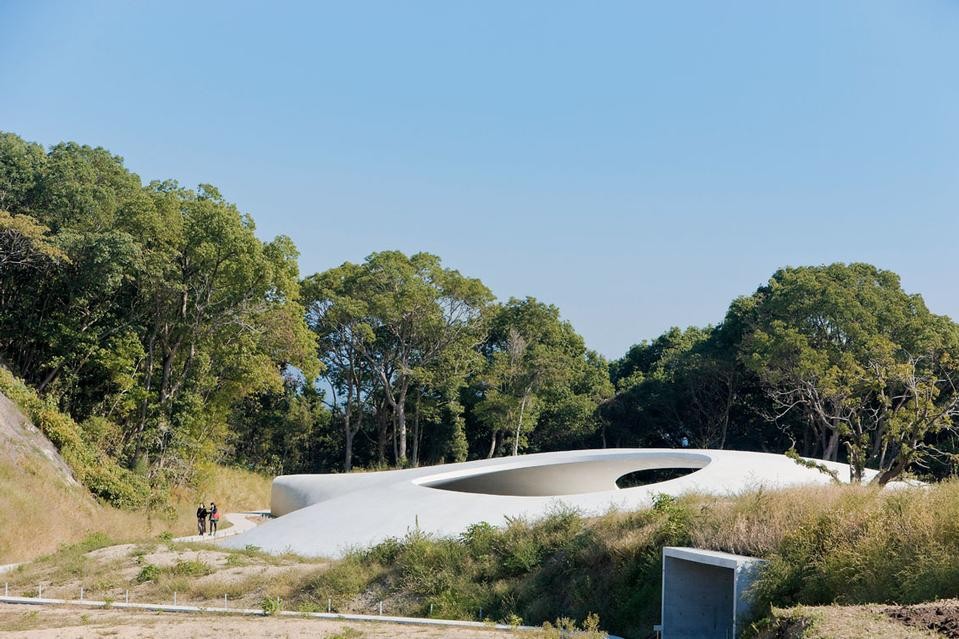
The first-time visitor may also be surprised by how big or, more correctly, how extensive the project is – it stretches over 60 metres along its longer axis. As you move across the landscape, adjusting to changes in elevation, the building appears to change volume, inflating and deflating like some seamless dirigible. And then you notice an aperture puncturing this smooth carapace, a dark circular opening like the blowhole of a static beast.
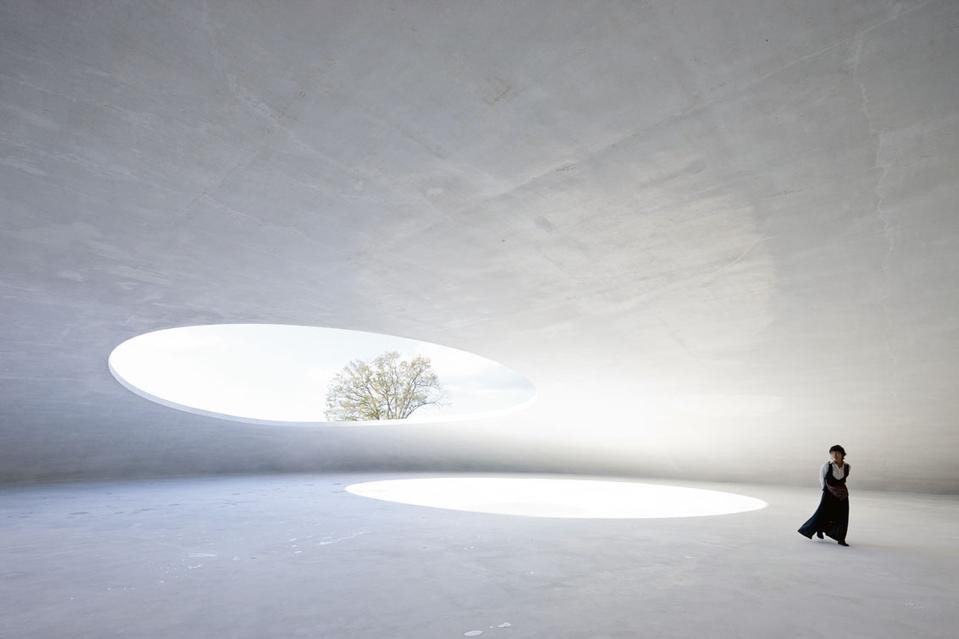
It’s a strange thing this Teshima Art Museum. There’s no immediately obvious point of entry. The use of exposed concrete suggests an industrial facility amid the bucolic if highly tailored nature of the island; yet the concrete also assumes a mysteriously soft shape (what could be inside?) and is unusually white (the absence of colour or the blending of all colours?) surrounded here by the verdant fields and a stand of trees towards the Inland Sea.
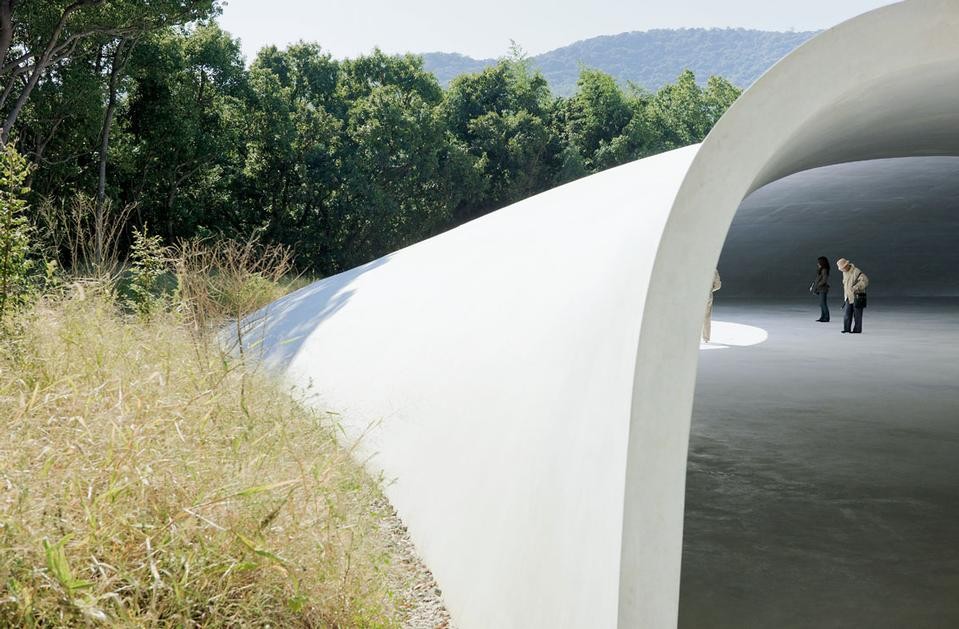
So you find yourself on a comparatively remote Japanese island, enjoying the village life and ocean air, trying to understand the entirety and indeed the full purpose of this unapologetically contemporary and unusual structure. You continue along the narrow concrete path, dipping slightly, to discover the Teshima Art Museum re-emerging between the trees, its low white curve holed now by a second dark oculus sinking towards the ground plane. Then you observe a protrusion morphing out from the main body of the building as a stretched, contiguous surface.
The Teshima Art Museum is almost completely empty, devoid of contents. Its interior is fluid, a concrete membrane carpeting the ground and wrapping up from shadowy edges to span as a low unobstructed dome overhead. Neither columns nor beams interrupt the organic singularity of the total volume. Similarly there is none of the clutter normally associated with museums.
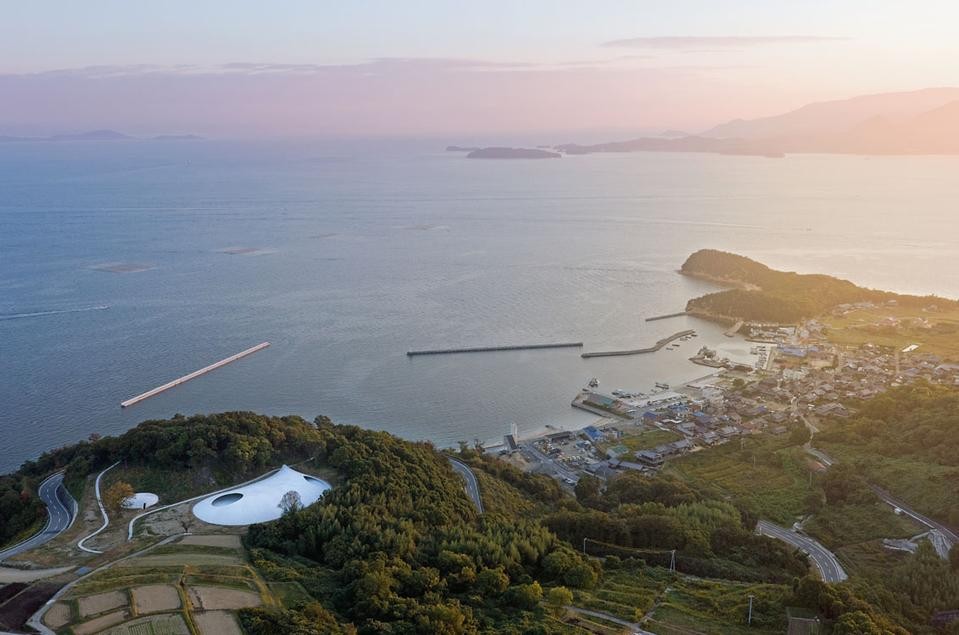
Nishizawa designed the Teshima Art Museum in association with the artist Rei Naito, cognisant of her methodologies and of her interests in natural phenomena of water, light and air.
